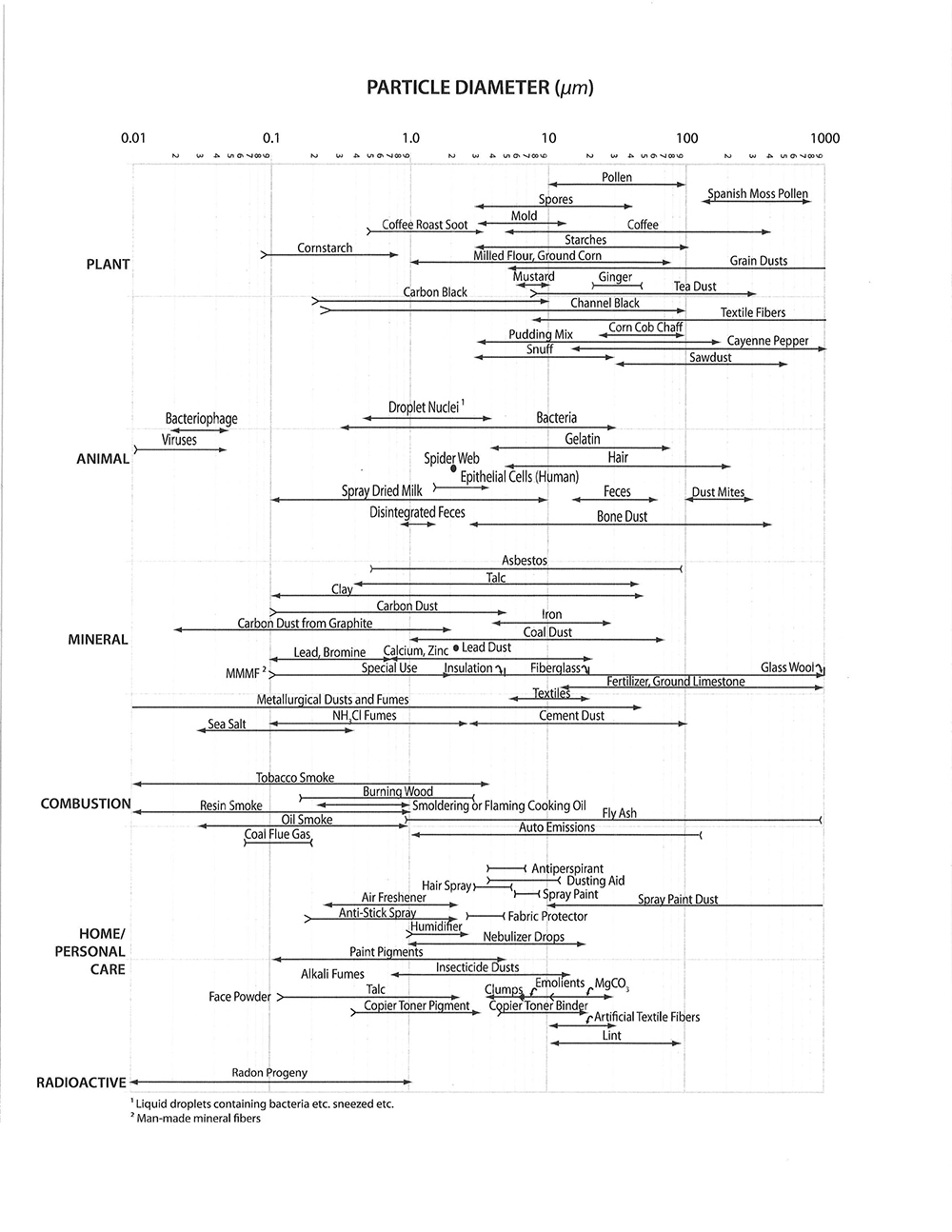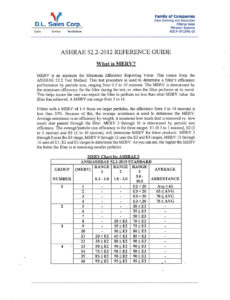
What’s In The Air We Breathe?
Have you ever wondered what is in the air we breathe? Studies have been done to characterize particle sizes of known airborne contaminants. Some contaminants cause reactions to the body while others do not. By knowing what is around us, we can determine how to properly remove it with filtration.
Here’s a look at some examples.
When flowers and trees start to bloom in the spring, they produce pollens which can cause nasal congestion known by most of us as “allergies”. Pollen particles can range in size, but typically are not smaller than 7 microns. One way you can protect yourself is by using the proper air filter to capture the pollen. The minimum filter rating required is a MERV 8. A MERV 8 filter will remove a minimum of 70% of the pollens passing through it. With a minimal investment, you can protect yourself from those pesky spring time sniffles.
Another common airborne contaminant is tobacco smoke. Smoke is made up of many particles, not visible to the naked eye, which stick together and are seen as smoke. These small particles are better known as sub-micron particles. Sub-micron particles are able to bypass your body’s natural ability to keep contaminants out which ultimately get stuck deep in the lungs. So what can be done? Smoke can be removed from the air stream with filtration. An acceptable level of filtration is MERV 14, but MERV 15 will do an even better job. This level of filtration is most commonly found in commercial buildings and hospitals. With the advancement in filter technology, you are now able to provide this level of protection in your home. You can retrofit your existing 1″ filter return grill with a 4″ deep, headered MERV 14 or 15.
Want more examples, see the chart published in the NAFA Guide to Air Filtration 5th Edition.
All of these filters can be found at DL Sales Corp. As a full line distributor of air filtration, we can match the filter to meet your needs. Go to the contact page and submit a request for more information. Include a brief description of what you would like to accomplish.




